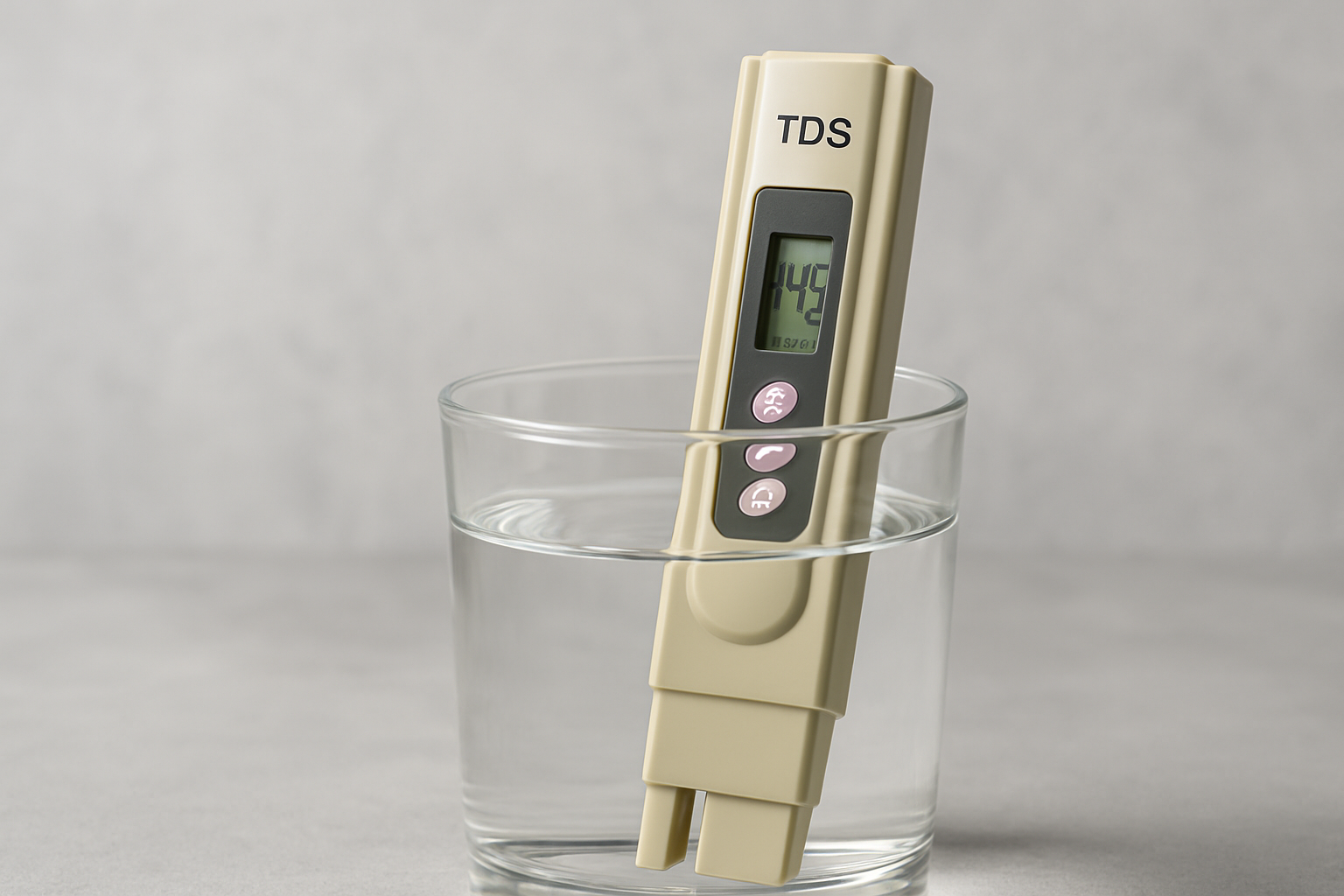Understanding TDS (Total Dissolved Solids): What It Means for Your Water Quality
Water quality is a critical concern for households, industries, and environmental health. One commonly cited metric in water testing is Total Dissolved Solids (TDS). While TDS is often used to gauge water purity, its significance is frequently misunderstood. This article explains what TDS measures, why it matters, and how it interacts with water filtration systems.
What Is TDS?
Total Dissolved Solids (TDS) refers to the total concentration of inorganic and organic substances dissolved in water. These solids include:
- Minerals: Calcium, magnesium, sodium, potassium.
- Salts: Chlorides, sulfates, bicarbonates.
- Metals: Iron, lead, copper (in trace or harmful amounts).
- Organic compounds: Pesticides, pharmaceuticals (in rare cases).
TDS is measured in milligrams per liter (mg/L) or parts per million (ppm). It does not include visible particles like sand or sediment, which are classified as suspended solids.
How Is TDS Measured?
TDS is typically measured using a digital TDS meter, which calculates water’s electrical conductivity. Dissolved ions (e.g., salts, minerals) conduct electricity, so higher conductivity correlates with higher TDS. However, TDS meters have limitations:
- They cannot identify specific contaminants (e.g., lead vs. calcium).
- Non-conductive substances (e.g., organic pollutants, bacteria) are not detected.
For comprehensive water quality assessment, TDS should be paired with other tests (e.g., microbial analysis, heavy metal screening).
Is High TDS Harmful?
TDS alone is not a definitive indicator of water safety. Its implications depend on the type of dissolved solids:
1. Beneficial TDS
- Minerals like calcium and magnesium contribute to water’s taste and provide essential nutrients. The World Health Organization (WHO) suggests that water with 50–300 ppm TDS is ideal for drinking.
2. Harmful TDS
- High levels of salts (e.g., sodium chloride), nitrates, or heavy metals (e.g., lead, arsenic) can pose health risks. Water exceeding 500 ppm TDS may taste salty or metallic and could indicate contamination.
3. Neutral TDS
- Some dissolved solids, like silica, have no significant health impact but may affect water’s aesthetic qualities.
TDS and Water Filtration Systems
Different filtration technologies impact TDS in distinct ways:
1. Reverse Osmosis (RO)
- Effect: RO removes 90–99% of TDS, including minerals and salts, producing water with very low TDS (often <50 ppm).
- Use Case: Ideal for areas with high TDS due to excessive salts or contaminants (e.g., coastal regions with brackish groundwater).
- Consideration: RO water may taste “flat” due to mineral removal. Remineralization filters can restore beneficial minerals post-RO.
2. Ultrafiltration (UF)
- Effect: UF does not reduce TDS significantly, as it primarily removes particles, bacteria, and macromolecules (not dissolved ions).
- Use Case: Suitable for water with low-to-moderate TDS but microbial risks.
3. Activated Carbon Filters
- Effect: Minimal impact on TDS, as carbon targets organic chemicals and chlorine, not dissolved minerals.
4. Water Softeners
- Effect: Softeners replace calcium and magnesium (hardness minerals) with sodium, slightly altering TDS but not reducing overall levels.
When Should You Worry About TDS?
- Drinking Water: If TDS exceeds 500 ppm, investigate the source. High TDS from salts or pollutants requires treatment (e.g., RO).
- Appliances: High TDS (especially hardness minerals) causes limescale in kettles, water heaters, and pipes, reducing efficiency and lifespan.
- Aquariums and Gardening: Fish and plants may be sensitive to abrupt TDS changes; consistent levels are critical.
Myths About TDS
- “Zero TDS is best”: Not true. Ultra-low TDS water lacks beneficial minerals and may leach metals from pipes.
- “High TDS always means contamination”: Natural mineral-rich springs can have TDS >500 ppm but are safe to drink.
- “TDS meters detect all contaminants”: False. They miss non-conductive pollutants like pesticides or bacteria.
Managing TDS in Your Home
- Test First: Use a TDS meter to establish a baseline. Compare results to local water quality reports.
- Choose Targeted Filtration:
- For high TDS: Install an RO system with remineralization.
- For hardness: Use a water softener.
- For chemical contaminants: Add activated carbon.
- Maintain Systems: Regularly replace filters to ensure effectiveness.
Conclusion: TDS Is a Clue, Not the Full Story
TDS provides a snapshot of dissolved substances in water but cannot distinguish between harmful and beneficial components. While it helps identify potential issues (e.g., salinity, scaling), comprehensive water quality requires multi-stage filtration and periodic testing. For households, balancing TDS management with mineral retention ensures safe, great-tasting water that protects both health and appliances.
By understanding TDS and pairing it with the right technology, you can make informed decisions—whether you’re optimizing a coffee maker’s performance, safeguarding a baby’s formula, or simply enjoying a refreshing glass of water.

